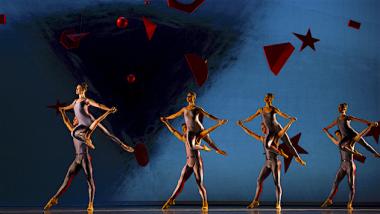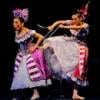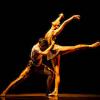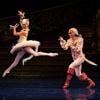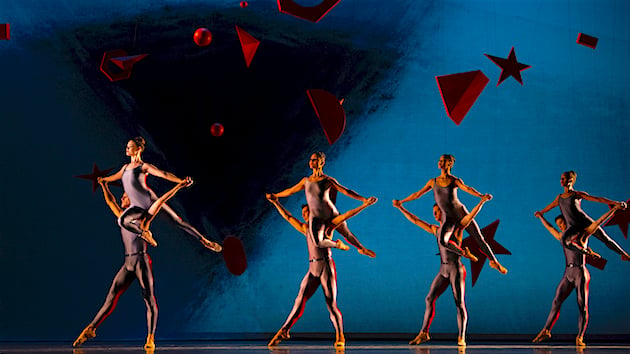
Shostakovich Trilogy, last seen by this reviewer at San Francisco Ballet in 2014 at its company premiere, has made a timely return to the War Memorial Opera House to conclude the company’s season — the final performance is May 12 — with a bang.
Created by the Leningrad-born Alexei Ratmansky and co-produced with American Ballet Theatre, where the choreographer’s been artist in residence since 2009, the full-length ballet reads and dances even more impressively today than it did when it was new, which is saying plenty. All else aside, it’s complemented by the excellence of today’s corps de ballet, which gave a strong showing. As staged by Nancy Raffa, ABT’s ballet mistress, it looks fresh top to bottom, animated by a bright energy in each of its three acts. The principal cast, for the most part different than in 2014, was superb.
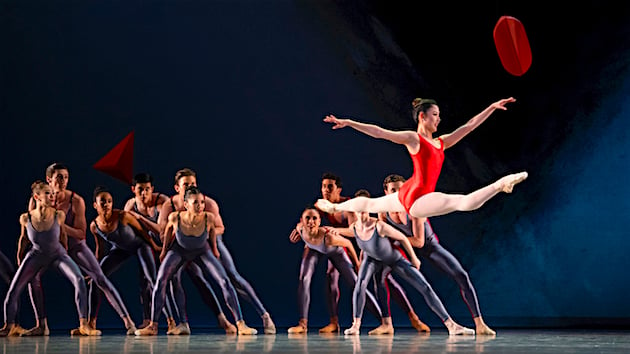
To date, Ratmansky’s added eight works of delightful variety to SFB’s repertory. But it was his very first SFB commission, the 2003 Carnival des Animaux, that rose to top of mind at Tuesday night’s opening performance. Superficially, the ballets have nothing in common: not its music (Debussy), its audience (kids of all ages, including adults), nor its characters (duh). But the Trilogy really was proof of the unusual humanity Ratmansky, a consummate craftsman, displayed from the start; he can go deep, but he never goes so deep that we cannot read the essence of his characters, the desires, joys, and sorrows that connect them to his audiences. Even elephants can wear pink tutus and want to be graceful, you know, and even Soviet subjects can want to live free of government interference. It may be an oversimplification, but look, how long is a ballet, even a long ballet, anyway? And how oversimplified is it in our rapidly shifting world, where elephants are in danger of extinction and the U.S. president talks with the president of Russia for 90 minutes on the phone? But I digress.
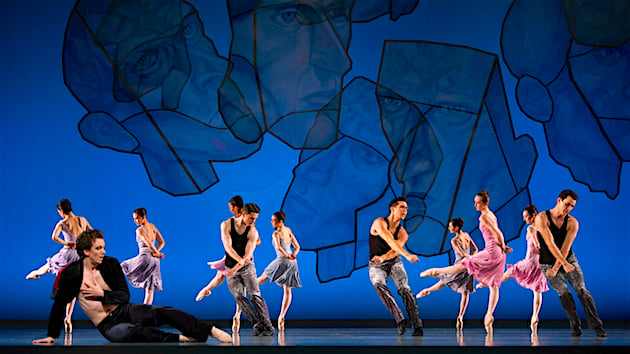
It’s Shostakovich Trilogy’s second act, Chamber Symphony, that shows this to full advantage. Just as in Carnival des Animaux, which seemed even in early rehearsals to be about a circle of friends who cared deeply for each other, here we could see the extent of Shostakovich’s (principal dancer Ulrik Birkkjaer) emotions in all their joy and distress through three successive loves, the last two ending in marriage.
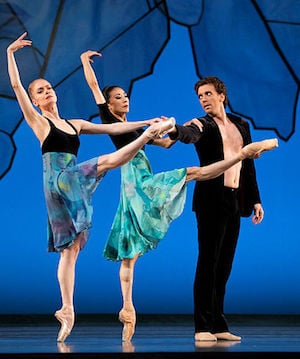
Birkkjaer, who joined the company in 2017 from the Royal Danish Ballet, has great technique; extraordinarily, though, it’s joined with his nigh-transparent portrayals of love, happiness, bewilderment, sorrow. You don’t see many faces like that in dance, unless they’re on character dancers. When Birkkjaer’s Shostakovich is happy, you not only see it, you share in it; joyful infatuation with his first girlfriend (blithely played by principal Sasha De Sola), to whom he never committed entirely. Then, when his first wife, the mother of his two children (portrayed by principal Mathilde Froustey) is disappeared by faceless functionaries, he looks like he’s just been run over. He’s not angry so much as calmly yet eloquently devastated; as if his life can not go on, not down any rational path. The third relationship has achieved maturity. Yuan Yuan Tan, through her richly expressive body, gives the second wife a nuanced, compassionate character, to whom he responds with palpable warmth but not ardor. You can see how they’ve grown together, but what remains lost to him as well.
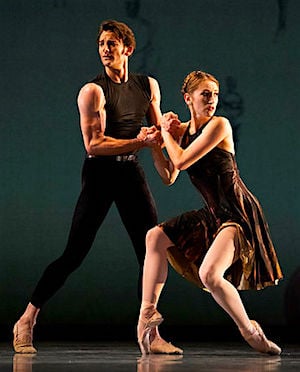
The first section, Symphony No. 9, drew expressive performances from principal dancers Jennifer Stahl, Aaron Robison, Dores André, and Joseph Walsh, further graced by the pyrotechnical spins and leaps of Wei Wang.
Section three, Piano Concerto No. 1, with Mungunchimeg Buriad, pianist, and Adam Luftman, trumpet, was winningly danced by a corps of 12 and the two contrasting principal couples, Apollonian Sofiane Sylve and Carlo Di Lanno, and Dionysian Wona Park and Angelo Greco — if you will. Martin West conducted the sublime orchestra.
There’s so much more, though, to Shostakovich Trilogy and obviously to Ratmansky, whose dance with Russia, winding in and out of the Bolshoi to work in Europe and Asia as well as the U.S., is driven by artistry and storytelling. No matter where he’s working, he seems open to seeking, finding, and sharing his truth, leaving us all the richer for it.

